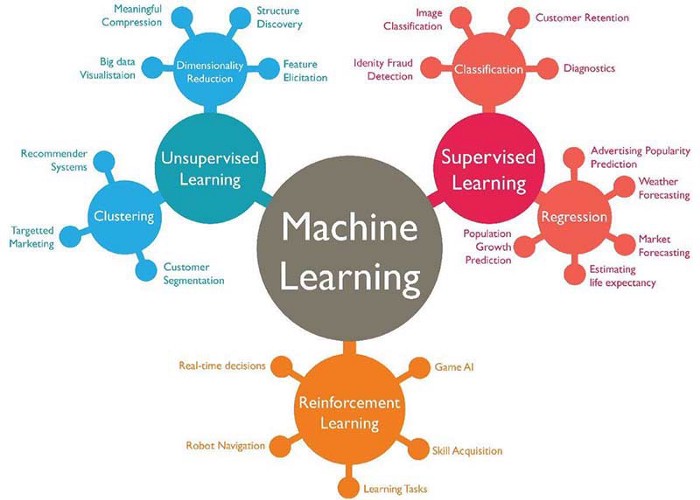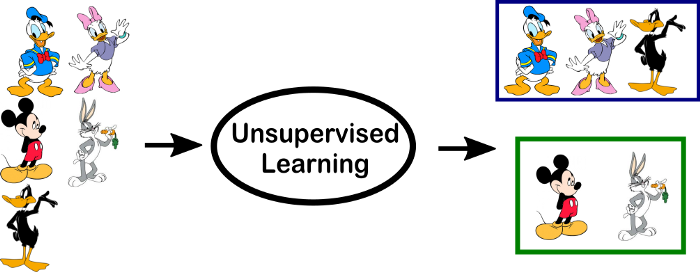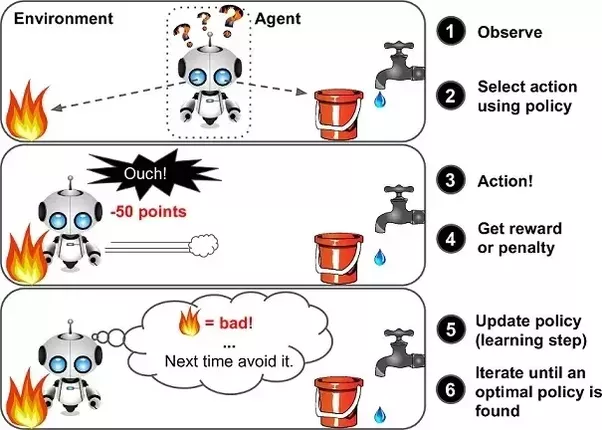Machine Learning¶
According to Arthur Samuel, Machine Learning algorithms enable the computers to learn from data, and even improve themselves, without being explicitly programmed.
Machine learning (ML) is a category of an algorithm that allows software applications to become more accurate in predicting outcomes without being explicitly programmed. The basic premise of machine learning is to build algorithms that can receive input data and use statistical analysis to predict an output while updating outputs as new data becomes available.
Types of Machine Learning¶
Machine learning can be classified into 3 types of algorithms:
- Supervised Learning
- Unsupervised Learning
- Reinforcement Learning

Overview of Supervised Learning Algorithm¶
In Supervised learning, an AI system is presented with data which is labeled, which means that each data tagged with the correct label.
The goal is to approximate the mapping function so well that when you have new input data (x) that you can predict the output variables (Y) for that data.

As shown in the above example, we have initially taken some data and marked them as ‘Spam’ or ‘Not Spam’. This labeled data is used by the training supervised model, this data is used to train the model.
Once it is trained we can test our model by testing it with some test new mails and checking of the model is able to predict the right output.
Types of Supervised learning¶
- Classification: A classification problem is when the output variable is a category, such as “red” or “blue” or “disease” and “no disease”.
- Regression: A regression problem is when the output variable is a real value, such as “dollars” or “weight”.
Overview of Unsupervised Learning Algorithm¶
In unsupervised learning, an AI system is presented with unlabeled, uncategorized data and the system’s algorithms act on the data without prior training. The output is dependent upon the coded algorithms. Subjecting a system to unsupervised learning is one way of testing AI.

In the above example, we have given some characters to our model which are ‘Ducks’ and ‘Not Ducks’. In our training data, we don’t provide any label to the corresponding data. The unsupervised model is able to separate both the characters by looking at the type of data and models the underlying structure or distribution in the data in order to learn more about it.
Types of Unsupervised learning¶
- Clustering: A clustering problem is where you want to discover the inherent groupings in the data, such as grouping customers by purchasing behavior.
- Association: An association rule learning problem is where you want to discover rules that describe large portions of your data, such as people that buy X also tend to buy Y.
Overview of Reinforcement Learning¶
A reinforcement learning algorithm, or agent, learns by interacting with its environment. The agent receives rewards by performing correctly and penalties for performing incorrectly. The agent learns without intervention from a human by maximizing its reward and minimizing its penalty. It is a type of dynamic programming that trains algorithms using a system of reward and punishment.

In the above example, we can see that the agent is given 2 options i.e. a path with water or a path with fire. A reinforcement algorithm works on reward a system i.e. if the agent uses the fire path then the rewards are subtracted and agent tries to learn that it should avoid the fire path. If it had chosen the water path or the safe path then some points would have been added to the reward points, the agent then would try to learn what path is safe and what path isn’t.
It is basically leveraging the rewards obtained, the agent improves its environment knowledge to select the next action.